Top 10 Patterns from Sam Rayburn
Adaptability was the name of the game in the 2020 Tackle Warehouse Pro Circuit opener
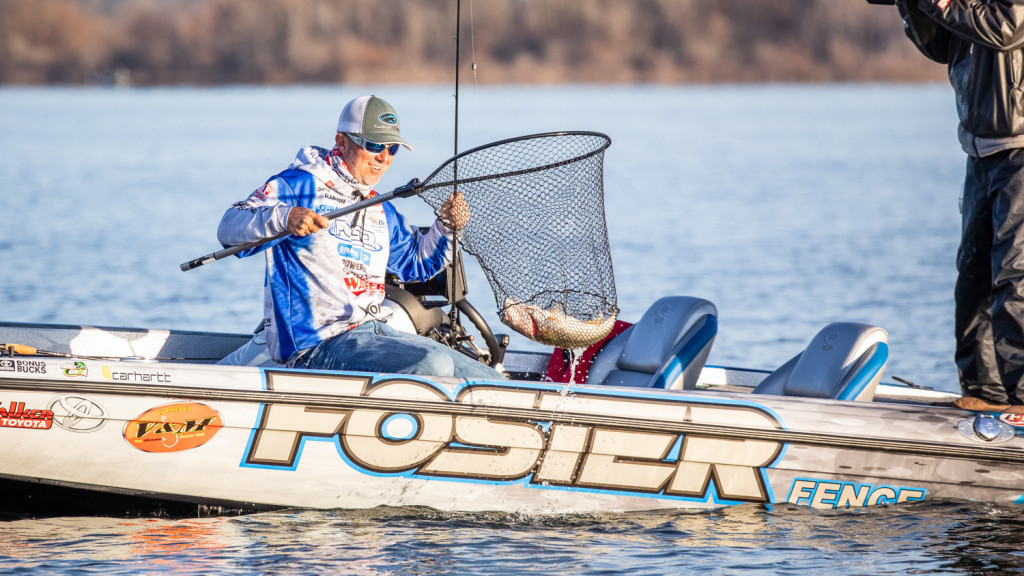
Sam Rayburn is one of the best bass fishing lakes in the country, but it sure didn’t show its full potential during the Tackle Warehouse Pro Circuit season opener.
Cold fronts, high winds, fluctuating water temps and transitioning fish had the fishing jumbled. The patterns the top 10 pros employed throughout the week followed suit.
John Cox won wire-to-wire thanks to a magic, one-cast deal he exploited the first two days and some clutch junk-fishing up shallow come the weekend. And the guys behind him seemingly had to adapt on the fly, as well.
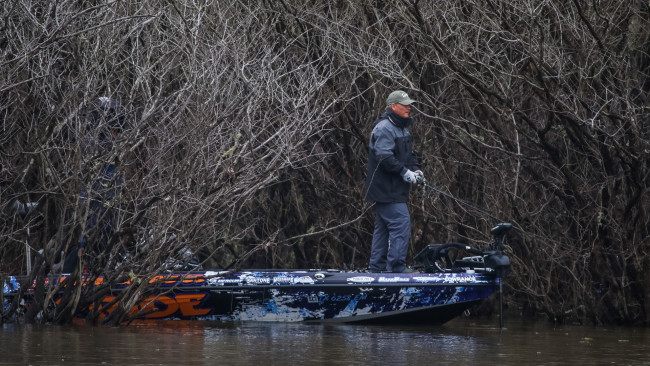
2. Dickerson loses winning fish
One fish can make or break a tournament. In the case of Tommy Dickerson, it can also cost a six-figure paycheck.
With a final-day game plan of fishing deep and swinging for the fences for big bites later in the day, Dickerson finally got the bite he sought from a 7-pounder. Unfortunately, just as he got her to the boat, she came off, and with it went Dickerson’s chance to overtake Cox.
Yet, it was his unique shallow pattern that got him in position for the win in the first place.
The Rayburn local has learned over his 20 years of fishing Big Sam that the water in the Devil’s Ford Creek area always stays dirty, and because of that, few anglers ever fish it. In an attempt to get away from the rest of the field, that’s where Dickerson went to work all week.
“It’s really cool, because you’d think you’re in some bayou in Louisiana,” says Dickerson of the three creeks in that area, which are all lined with cypress trees. “I wasn’t fishing but 1 to 3 foot, hitting those cypress trees, especially the isolated ones or ones with lily pad stems.”
As for baits, Dickerson tossed around a black-and-blue jig with a Reaction Innovations Twerk trailer, but he got his bigger bites on a black Picasso Shock Blade with an orange Lake Fork Live Magic Shad Swimbait.
Why orange?
“To offset the dirty water,” says Dickerson, who also utilized a Strike King Red Eye Shad in crawfish patterns. “The first day I had two 5-pounders grab my tail. I put that orange swimbait on there and didn’t miss one since.”
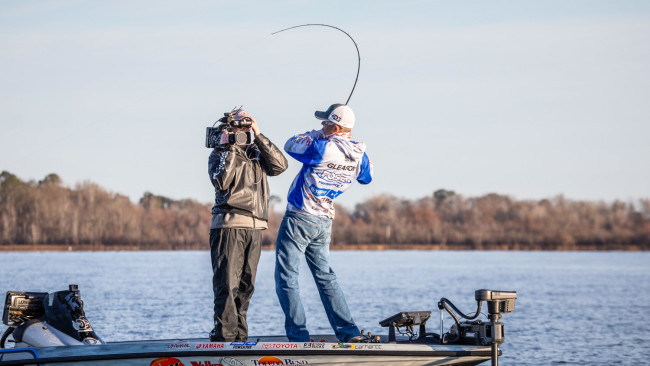
3. Gleason’s focus pays off
Darold Gleason has dreamed of trying to prove himself as a professional angler for a long time, so when he finally got his shot on a lake only an hour from home, the rookie committed himself to making a good first impression.
“I kind of shut life down so I could come over here and try to learn the lake even better,” says Gleason. “I probably came over here 30 times from Thanksgiving until off-limits.”
The end result was a significant number of waypoints, which he eventually whittled down from 30 on day one to four key ones the final day.
Every morning he’d start on an offshore turn in a deep drain just north of the 147 bridge, where he put on a show the first three days, catching fish nearly at will rotating between a tail spinner, a 1-ounce Carolina rig with a V&M Pork Shad 2.0 (Gleason’s candy color) and a drop-shot with either a V&M Pork Pin (watermelon bluegill) or a V&M Straight Shooter (morning dawn).
Once Gleason had a limit, he’d then start bouncing around between shallow and deep. The shallow spots were particularly key, as he looked for smaller pockets with drains in about 6 feet of water that also had grass. There, he’d throw a 1/2-ounce Z-Man ChatterBait (green pumpkin chartreuse) with either a Yamamoto Zako or a V&M J-Bug trailer, both in green pumpkin.
The game plan worked out best the first day, thanks in large part to a pair of kickers – a 6-3 and a 7-2. Yet, those would be the last true giants he’d connect with for the week.
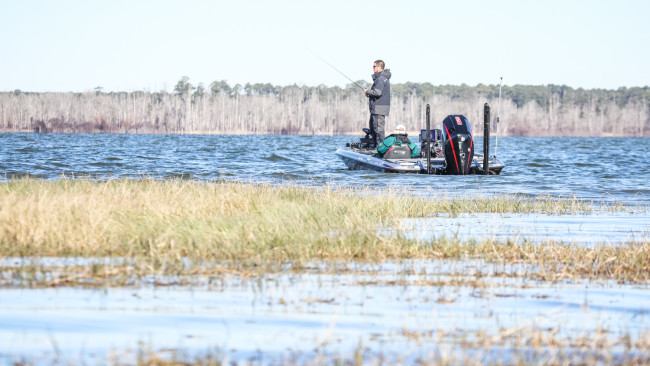
4. Neece rides rollercoaster up shallow
When it was right and he could get on his spot, Corey Neece may have had the best spot on Sam Rayburn. The problem was, he couldn’t always get on it, and it wasn’t always right.
Fishing in Veach Basin, Neece focused on a giant 4-foot grass flat. There was a little depression on top of a hump with a couple stumps on it that he’d pole down and hit repeatedly with one specific cast that accounted for the majority of his fish. And when they bit, it happened quick.
On days one and three, Neece had 20-plus-pound limits within an hour of starting the day. He caught a 7-pounder in the first few minutes on Saturday morning, and most of his damage was done on a BOOYAH Hard Knocker (Rayburn red).
“I caught some straight cranking, but I’ve been Yo-Yoing it a little bit,” says Neece. “It seems like they bit better when I Yo-Yoed it. They liked a little bit of action.”
Unfortunately, he never was able to fish the spot in the morning on day two, as some fellow competitors were fishing it. And on day four, the spot simply gave out. His fish had moved on, and with them, his chances of winning.
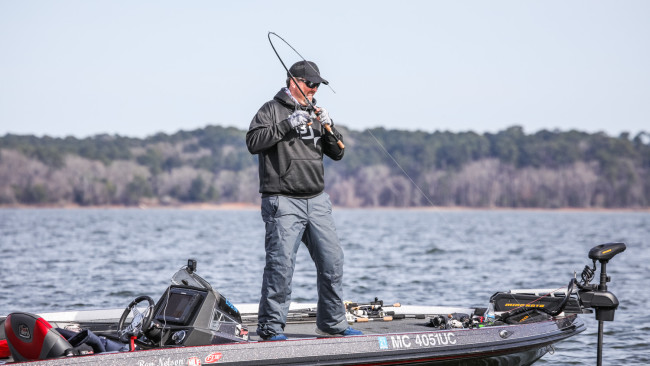
5. Nelson catches quantity, but not enough quality
If this event were the Bass Pro Tour format, where every fish counts, Ron Nelson would’ve blown away the field.
The reigning Polaris Rookie of the Year found an offshore ledge just south of Cassels-Boykin where he caught fish every cast for hours. As fun as it was, the spot ended up being both a blessing and a curse.
“Once you catch 12 pounds, you need a big bite,” says Nelson, who actually had a different spot he’d start at each morning to catch a quick limit on a shad-colored Keitech Swing Impact FAT on a 1/4-ounce head. “Guys here say you can catch 2-pounders all day and then catch a 7 or an 11 off the same school. So, I’m like, I’ll just keep on having fun and hoping that happens.”
Unfortunately, all Nelson got for his efforts was sore hands from all the 2-pounders he caught. Though, it wasn’t from lack of trying for kickers, as he cycled through numerous presentations in hopes of coaxing a bigger bite.
“You’d throw that Carolina rig out and they’d bite right away,” explains Nelson, who put a Zoom Brush Hog or Zoom Double Ringer on his rig. “Every time I caught one, the graph would just light up. There’d be 15 following that fish up. I’d throw a spoon down. They’d all leave. I’d try a big swimbait, but they wouldn’t eat that. I’d toss a jig, and they’d barely touch it. But if I threw that rig, it’d be ‘there’s another one; there’s another one.’”
When he got tired of catching cookie cutters, he did have a big-bite pattern that he went to each day, which was punching “topped out, floating hyacinth mixed with other floating grass” in the back of pockets with a Reaction Innovations Sweet Beaver (hematoma). That produced his biggest bites on day one, and he lost a giant on day three doing that.
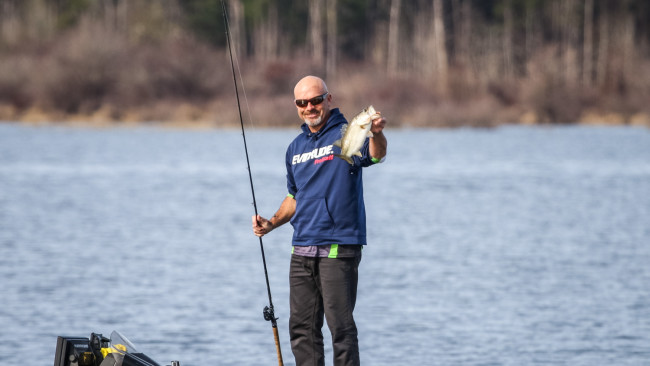
6. “Captain Crunch” turns around Dobson’s event
Scott Dobson caught just four fish in practice. Fortunately, those four led him to a unique Sam Rayburn pattern.
“At the end of the day Monday, I pulled up to the end of a drain on a shallow flat,” says Dobson, who fished in Buck Bay all week. “It had some crunchy stuff on it, and I got those bites. Then I ran that the last two hours of the day and found two little deals, and I fished that every day.”
What was that “crunchy stuff?”
“I have no clue,” says Dobson. “When I throw the Carolina rig around enough and feel the right bottom, I hone in on that. I make a bunch of casts and catch one or two. Clark Reehm says it’s hard clay. He calls it ‘crunchy clay’ or ‘Captain Crunch.’”
Whatever it is, Dobson found it in three 100-yard drains in 10 to 12 feet right at the mouth of a spawning bay. He also figured out the only thing the fish would eat there was a Carolina rig with a Zoom Brush Hog or a Zoom Super Fluke in green pumpkin candy.
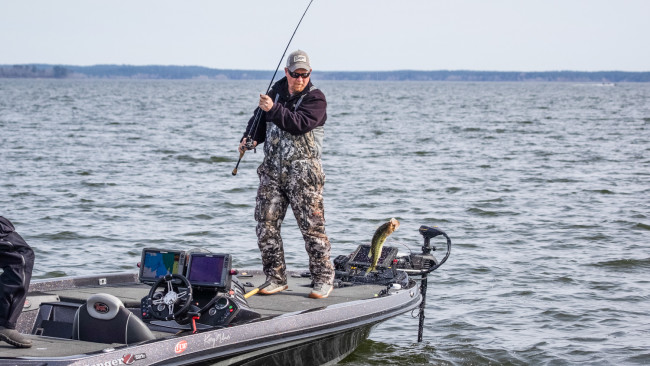
7. Milner does circles around “stupid” offshore flat
When looking offshore, most pros key in on noticeable contours. Because of that, Kerry Milner had his oddball offshore area all to himself all four days.
“They were up on a stupid spot,” says Milner. “They weren’t on an end or a nook. They were way up on top of a flat, with not really anything around it at all. There was just a hard spot with a couple brush piles in 6 feet of water.”
The area was roughly the size of an acre, located near Peckerwood Point, but in that acre, Milner says he simply just kept doing circles between three little brush piles and some hard spots.
Fortunately, there were plenty of fish there to eat his 3/4-ounce Carolina rig with a green pumpkin Zoom Lizard.
“I just kept doing circles round and round,” says Milner. “I’d push off to the edge to try and find them after they’d scatter, but they’d pull up and feed every once in a while. They even came up and schooled some.”
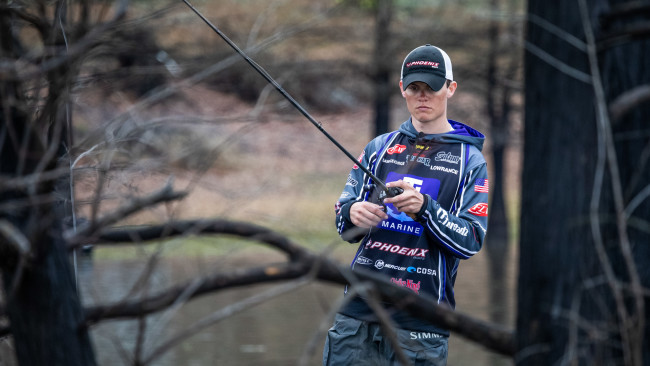
8. George keys in on unseen spawners
Sam George may not have a whole lot of history on Sam Rayburn, but his results sure don’t reflect that after making back-to-back top 10s on the fishery.
Yet, while he cranked offshore last year due to the high water, this year he opted for a different approach.
“I was catching them the absolute complete opposite way of how I caught them last year,” says George. “Last year, I caught them all in 25 or 28 feet, and this year I caught them up in the dirt. I honestly think the fish I was catching were spawning fish.”
Fishing in Stanley Creek, George spent every day trying to hit new stretches of cypress trees, of which there are plenty in that creek arm. The reason for the need for fresh pieces of wood is because he wasn’t able to go re-hit anything and catch a fish, which is what made him think his fish were spawning.
Fortunately, he was able to coax the unseen spawning fish to bite either a 1/2-ounce black-and-blue Strike King flipping jig with either a Zoom Big Salty Chunk or Strike King Rage Twin Tail Menace Grub trailer, a Strike King KVD Perfect Plastic Ocho, or a Salmo square-bill in demon craw the first three days. Unfortunately, his area died the final day, prompting him to go look offshore and come up with only one big bite.
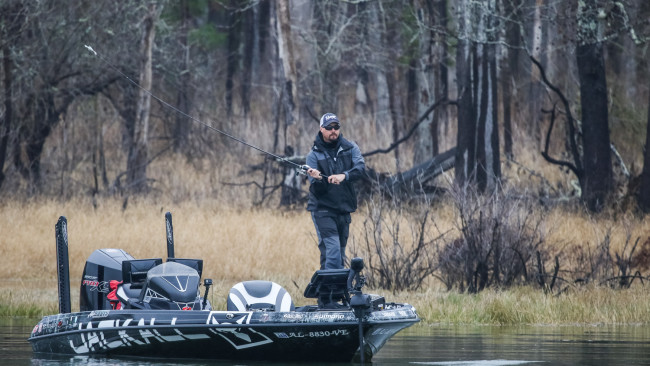
9. Davis gorges at lunch time
The fishing was definitely all about windows for the anglers this week, and for Alex Davis, that window opened at noon.
“Every day at lunchtime it happened,” he says. “I caught just about everything I weighed in.”
Fishing in Veach Basin, Davis started every day on a lone tree in 25 feet of water, with a large school sitting on it that always had at least a couple members willing to eat a 5-inch Scottsboro Tackle swimbait (natural light).
Once lunchtime rolled around, Davis got serious about fishing scattered grass.
“Wherever a grass line happened and you had three clumps out of it; right there,” explains Davis. “If I had more time to drive around, I could find more, but I didn’t have time.”
What makes Davis proud about this event was that after practice he was all-in on fishing rattle baits, yet his shallow pattern ended up working solely with a Jackall Break Blade with a Jackall Rhythm Wave swimbait trailer.
“Usually, a tournament that sets up like this is when I have my worst tournaments because I’m so stubborn,” says Davis. “I’ve done a 180. I’m trying to be like Bryan Thrift, and if it doesn’t work, just go practice. That’s what I did, and I found that shallow pattern on day two when all my other stuff dried up.”
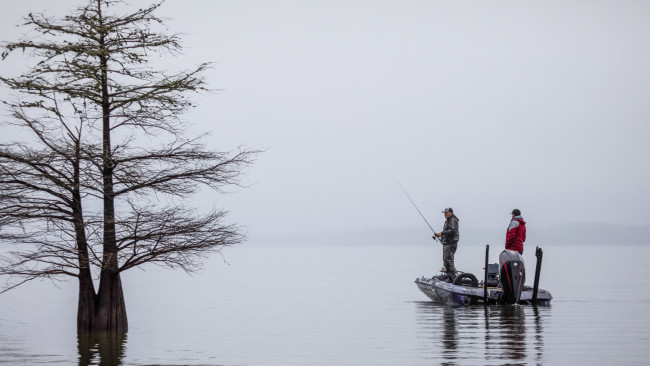
10. Canada targets isolated wood
Isolation was not a bad thing for Jon Canada this week.
Not only did the pro enjoy solitude for all of practice and the start of the tournament while fishing the entire west bank up between the two bridges, but what he was looking for up there was also isolated.
“I was fishing isolated trees, mainly cypress trees, that had a sand bottom or clay bottom,” says Canada. “I feel that’s the only thing those fish have to position themselves for staging when moving in or out, but I wasn’t catching them in the mouths of the big pockets like you would think. If I found a 400-yard stretch of bank and it had one tree and some sand or clay on it, I probably was going to catch one on it.”
Canada cycled through three techniques on any given solitary tree. He’d start with a white-and-chartreuse Z-Man ChatterBait with a Reaction Innovations Skinny Dipper trailer, and then mix in pitching a Reaction Innovations Man Bear Pig or Spicy Beaver, with a Reaction Innovations Flirt in watermelon red as a backup bait, which accounted for some key fish.
That trio actually helped Canada catch multiple fish off any given isolated tree a handful of times.
Unfortunately, Canada’s area began receiving plenty of company from locals come the weekend, along with some dirtier water. That prompted him to mention on day three he figured his bite was going away, and he was right.